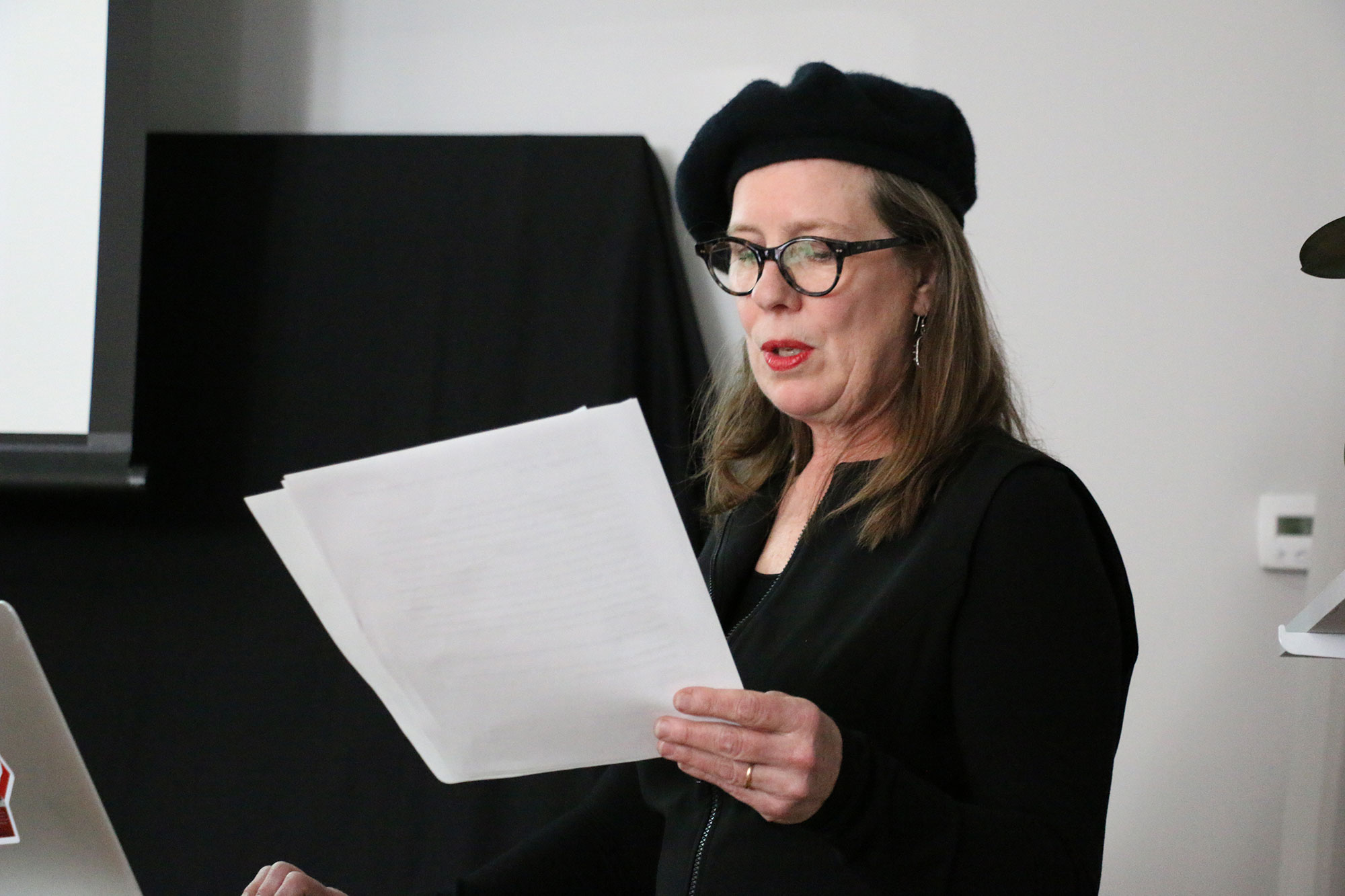
photograph by Kimia Maleki
The Roger Brown Study Collection is one of the most interesting properties run by the School of the Art Institute of Chicago (SAIC). The Collection features artworks, objects, paintings, sculptures, books, and so much more.
Recently the representation of the Estate of Roger Brown — an SAIC alumnus — was assigned to Kavi Gupta gallery. Announcing this news, SAIC Dean of Faculty Lisa Wainwright said: “SAIC is deeply committed to the thoughtful management of the Roger Brown estate. We are tremendously excited by Kavi and his staff’s ideas and enthusiasm around the advancement of Brown’s important legacy. Watch this space!”
Earlier this week, we conducted an interview with Lisa Stone, SAIC alumnus and curator of the Roger Brown Study Collection since 1997.
Would you tell us about the recent news about the representation of Roger Brown by Kavi Gupta gallery?
Sure. Let me start with a little background. The School of the Art Institute of Chicago was the recipient of the Roger Brown’s estate; Brown gave all the paintings that were unsold at the time of his death in 1997, that were at the Phyllis Kind galleries in New York and Chicago, to the School — a very large body of work. Previously, before he died, he had given 25 paintings to SAIC. Without knowing in advance, the school suddenly became the representative of his estate, which was a huge responsibility. This happened in 1997. In 2003 we retained Russell Bowman, of Russell Bowman Art Advisory, to be the first Roger Brown estate representative.
Russell knew Roger very well and had been the director and chief curator of the Milwaukee Art Museum. We worked with him for 13 years, until he retired and closed his gallery last December. We discussed his successor with SAIC administration and the RBSC steering committee. Kavi Gupta came to us with great enthusiasm and a great desire to represent the estate, and also a very in-depth proposal for the kinds of things he envisioned. So we were very thrilled for the opportunity to collaborate with him.
We had several meetings with his staff, and I was quite impressed that from the first meeting, Kavi brought his team (curatorial, registration, publishing, archiving staff) and they all had ideas. Kavi Gupta is not associated with working with the Chicago Imagists’ art, and while we are certainly not turning away from Roger’s identity as an Imagist artist, the RBSC steering committee and others agreed that it’s time to untether him from a [solely] Imagist identity and allow for robust new audiences and interpretations of the work within new contexts.
Would you tell us about the future plans by the new estate of Roger Brown?
Kavi Gupta participates in major national and international art fairs and we desire an international presence for Brown’s work. One of the main initiatives will be increasing the awareness of currents in his work among curators, nationally and internationally, and generating ideas for exhibitions and publications that explore new veins. Gupta will open the fall exhibition at their Carpenter Street Gallery with an exciting Roger Brown exhibition. They’re also working on three panel discussions around the exhibition, which will be held be at Kavi Gupta and SAIC.
What’s the most important thing you want students to know about Roger Brown?
That’s an overarching question. There are so many things I can say that I learned through my deep work here over the last 19 years. I can address Brown’s legacy as an artist through his works and I’m hyper-aware and ever-interested in the aspects of his creative life; he created homes, studios, gardens, and collections as a very serious response to geographical and cultural places, and his own place in time.
There are so many important things that I can say but one thing that always impacts me is how Brown knew who he was and he was absolutely determined to distill essential aspects of his life into his work. He was growing and changing all the time, and also projecting into the future. Toward the end of his life he was aware of his mortality and he worked hard to design three home/studio/garden environments that were projected beyond the life he had left. He designed places that he knew he would never inhabit. In certain ways, something really important to pass on to students is that his illness didn’t slow down his work, although he knew he didn’t have much time left.
What is your favorite object from the Roger Brown collection?
I can’t answer this question. It is important as a curator not to favor one thing over another in a collection that’s an entire ecosystem. If you favor a certain object over the entirety, then it affects your approach to the collection as a whole, and is also very subjective.
What was the most memorable reaction of visitor and guest you already have seen?
There has been a lot of astonishment. We had a student who came with a class recently and returned a few times since. She sent us emails and mentioned how deeply she was influenced, and her in-depth engagement with objects made me create a new category for storing emails called, “Great Things Said.” More recently, we had a grad student who worked here for one semester before graduating. She wrote eloquently about her experiences working here — things that were gratifying and descriptions of things that were intensely difficult for her. Her responses were profoundly revealing and we take them to heart.
Kimia Maleki is a master’s candidate in the Department of Arts Administration and Policy at SAIC.





















